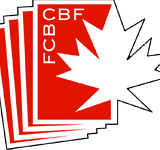
Nader Hanna – Hall of Fame 2019
Nader Hanna was born in Alexandria, Egypt in 1955. He graduated from the University of Alexandria in 1977 with a B.Sc. in Computer Engineering, and immigrated to Canada in 1982.
His playing achievements include:
- 4 North American titles (2005 Wernher Open Pairs; 2011 Keohane Swiss Teams; 2012 and 2014 Freeman Mixed Board-A-Match Teams), as well as a 2nd in the 2006 Roth Open Swiss Teams
- 2 Canadian National Open Team Championships (1996 and 1999), and runner-up on 5 occasions
- 2 Canadian Senior Team Championships (2018 and 2019), and runner-up in 2016 and 2021
- Runner-up in the 1990 Canadian Open Pairs Championship
Nader represented Canada as a player at several world championships, and his team finished 3/4 at the 1st World Transnational Teams in 1997. Additionally, he captained 12 Canadian teams at the world championships.
Nader served in a number of volunteer administrative capacities, and received the WBF award for outstanding service to bridge in 2013. He represented Zone III on the CBF board of directors from 2006 to 2020, and is the longest to serve as CBF president (2009 – 2015 and 2017 – 2020). Among his other contributions as an administrator:
- Member of the CBF Hall of Fame Committee (2009 – 2016)
- Member of the ACBL Hall of Fame Committee (2013 – 2018)
- CBF Junior manager (2008 – 2020)
- Chairman of 4 Canadian Bridge Championships (2010, 2013, 2016 and 2020) and 4 CBF International Fund Regionals (2012, 2014, 2018 and 2020)
The following hand from a Vanderbilt match at the 1999 Spring North American Bridge Championships in Vancouver, BC was reported by David Lindop in the daily bulletin:
North
♠ 2
♥ K Q 8 7 5 4
♦ A K 4
♣ A 7 5
WestEast
♠ 9 6 3♠ A Q J 7 5
♥ A 10 6 2♥ 3
♦ 10 8♦ Q 9 7 5 3
♣ K Q 9 8♣ 6 4
South
♠ K 10 8 4
♥ J 9
♦ J 6 2
♣ J 10 3 2
WestNorthEastSouth
LindopHanna
1♥2♥*Pass
2♠3♥Pass3NT
DoubleAll Pass
* Michaels (spades and a minor suit)
“The opening lead was a low spade to East’s ♠J and Nader’s ♠K. He knew the defenders could not run the spade suit immediately and also suspected that the missing hearts were divided 4-1 based on the auction.
The usual play in this position is to lead the ♥J and follow with the ♥9, taking a finesse if the ♥10 hasn’t appeared. Nader, however, could see the problem with that play. West would win the ♥J with the ♥A and there would be no entry back to the South hand to take the heart finesse.
Nader led the ♥9 and took an immediate finesse! When this won, he continued with the ♥J. There were enough entries to dummy to establish the hearts and make 3NT.”
In 1997 Ted Horning reported the following hand in his national newspaper column:
North
♠ 10 5
♥ K 2
♦ Q 8 7 3
♣ K Q 10 7 6
WestEast
♠ A J 7 3♠ Q 6 4 2
♥ Q J 9 7♥ 10 6 4 3
♦ 10 6 5 2♦ 4
♣ 2♣ 9 5 4 3
South
♠ K 9 8
♥ A 8 5
♦ A K J 9
♣ A J 8
WestNorthEastSouth
HannaFraser
2NT (1)
Pass3NT (2)Pass4♥ (3)
Pass5♣ (4)Pass5♦
Pass6♦All Pass
(1) 20-21 High card points
(2) How many controls do you have?
(3) Eight, an ace being two and a king one
(4) Bid any four card suit up-the-line
“Some pairs can handle certain hand types exquisitely. While we may suggest that there is little luck in bridge, one is surely unlucky when a hand comes up that suits the opposition methods perfectly.
North was Nader Hanna of Toronto and South was Doug Fraser of Montreal. Reigning Canadian team champions, they bid this hand marvellously.
Nader made the first winning decision, determining that slam was possible if Doug held sufficient controls and length in one of the minor suits. Fortunately, the partnership was playing a bidding style called ‘CONFI’ short for controls, then fits. Doug showed enough controls that Nader knew the partnership is not off an ace and a king and then, when Doug showed four diamonds, the diamond slam that few partnerships would bid was reached.
The hand requires delicate play with a club lead. Declarer must win the club and test diamonds by playing the ace from hand. When both opponents follow, South must abandon diamonds temporarily. A heart to the king and a heart to South’s ace is followed by a third heart, trumped with the diamond 7 in dummy. This line of play loses only if East has only two hearts and also has the ten of diamonds.
After ruffing a heart, South can play the queen of diamonds and another diamond to extract the remaining trumps. Count declarer’s tricks – zero spades; two hearts plus a heart ruff; four diamonds and five clubs.
Wouldn’t you consider yourself unlucky to have been sitting East-West when this hand was played?”


